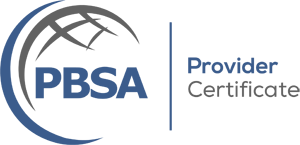How to Nail the Perfect Exit Interview
How to Nail the Perfect Exit Interview
1/13/
Exit interviews are often overlooked, yet they hold the potential to uncover invaluable insights about your company. When done correctly, they can highlight areas for improvement, boost employee satisfaction, and even refine your hiring practices. But what separates a mediocre exit interview from a truly impactful one? Let’s dive in.
The Purpose of an Exit Interview
First, it’s important to understand the goal: exit interviews are not just about closure. They’re about learning:
- Why employees are leaving.
- What you can do better.
- How to retain top talent in the future.
Consider the case of Zappos, a company known for its unique culture. When an employee decides to leave, they’re offered an exit interview that focuses on the “why” behind their decision. By addressing these reasons, Zappos continuously refines its workplace environment, maintaining its status as a top employer.
Best Practices for a Meaningful Exit Interview
- Timing is Everything
Schedule the exit interview on the employee’s last day or shortly after their departure. This allows them to speak freely without fear of immediate repercussions. Research from Harvard Business Review highlights that employees are more candid when they feel their responses won’t impact their current role.
- Choose the Right Interviewer
The interviewer should ideally be someone outside the employee’s direct team—like an HR representative. This neutral party approach encourages honesty and reduces the potential for defensive answers.
- Ask Open-Ended Questions
Focus on questions that invite reflection rather than yes/no answers. Examples include:
- “What prompted you to start looking for another job?”
- “Were there any resources or tools you felt were missing?”
- “What did you enjoy most about your role?”
Patagonia, known for its employee retention strategies, discovered through exit interviews that many employees left due to limited growth opportunities. By addressing this, they implemented new development programs, reducing turnover by 20% in two years.
- Create a Comfortable Environment
Whether in person or virtual, the setting should feel safe and professional. Assure the departing employee their feedback is confidential and will be used constructively.
- Focus on the Big Picture
While it’s tempting to dive into specific grievances, look for trends over time. For instance, if several employees mention a lack of flexible work options, it’s a clear sign to reassess your policies.
Common Pitfalls to Avoid
Making It Too Formal
A rigid, overly structured process can stifle genuine feedback. Aim for a conversational tone while staying on track.
Failing to Act on Feedback
Collecting data is meaningless if you don’t act on it. According to Gallup, 52% of employees say their feedback isn’t acted upon. Don’t be that company.
Using It as a Complaint Session
Avoid letting the conversation devolve into a one-sided rant. Gently steer the discussion back to actionable insights.
Leverage Technology
Tools like Western Verify’s enhanced employment screening systems can help identify trends related to turnover. For example, if a pattern emerges where employees from certain departments consistently cite management issues, it’s a red flag worth investigating. By integrating these tools with your exit interview process, you gain a more holistic view of your workplace dynamics.
Build a Better Workplace
An exit interview isn’t just the end of an employee’s journey; it’s a stepping stone for your company’s growth. By embracing honest feedback and acting on it, you can create an environment where employees want to stay.
Ready to refine your employee lifecycle? Let Western Verify help you ensure your team’s feedback leads to meaningful change. Contact us today to learn more about how we can support your hiring and retention strategies. www.westernverify.com

Blaine is the Co-Founder and COO of Western Verify, and spends his free time hosting parties or traveling with his amazing family.


